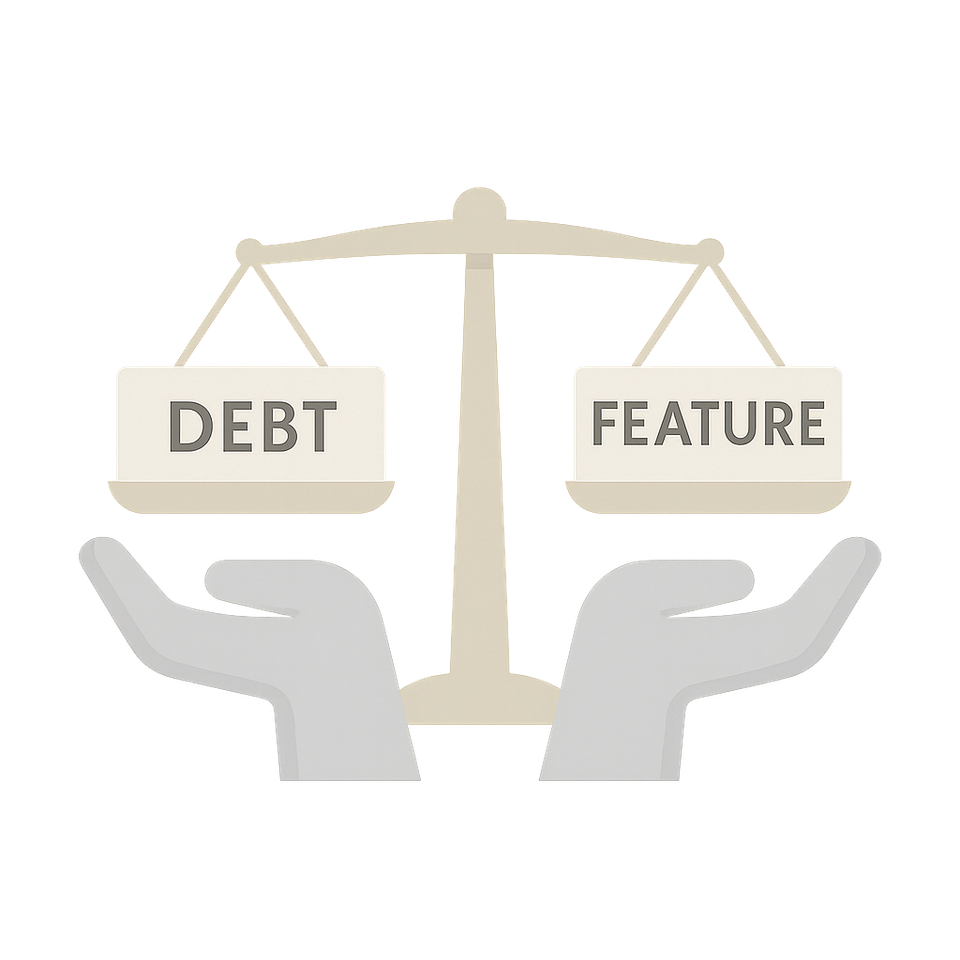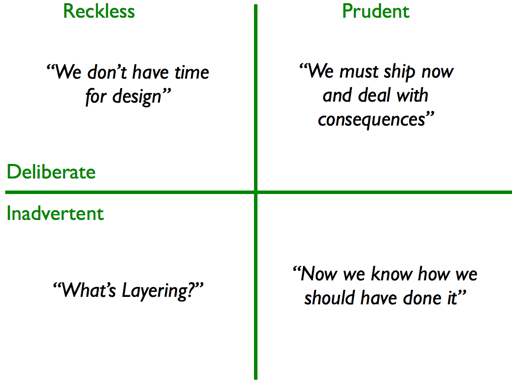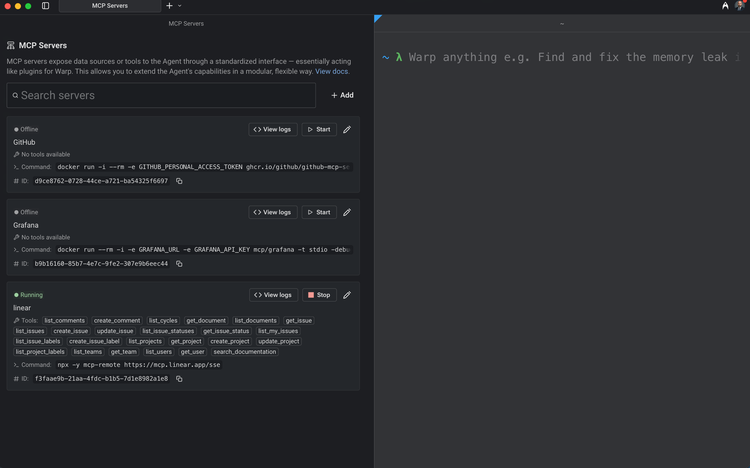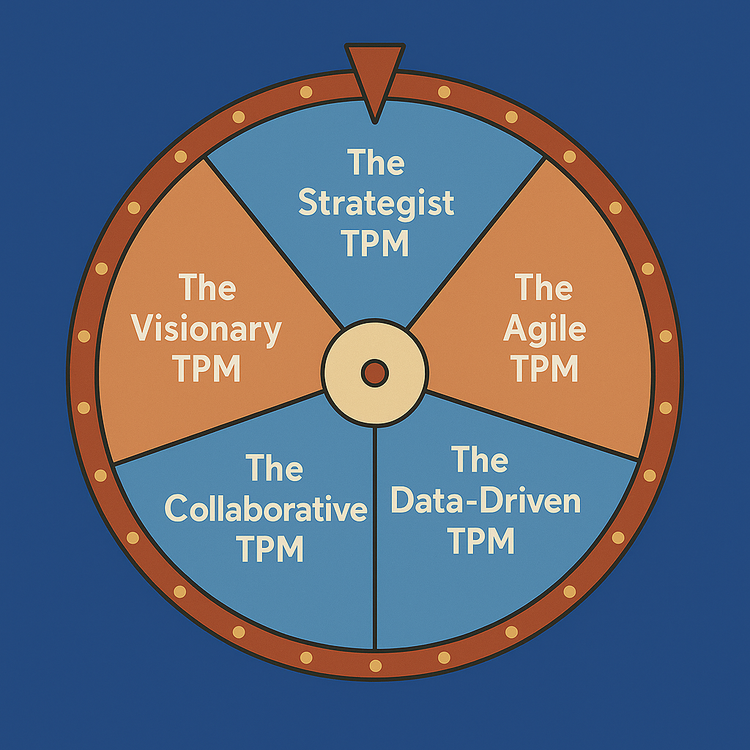Balancing Technical Debt and Innovation as a TPM

“The art of technical program management lies in negotiating the space between what’s urgent and what’s essential.”
Technical Program Managers (TPMs) are responsible for ensuring technical initiatives move forward efficiently while aligning with broader strategic goals. One of the most nuanced and difficult challenges TPMs face is balancing short-term pressure to innovate with long-term necessity to address technical debt.
In the race to deliver business value, innovation often takes center stage. Product over Operational Excellence. However, when organizations ignore the growing weight of legacy systems, brittle integrations, and scaling bottlenecks, they risk paralyzing their ability to deliver anything at all. At the same time, excessive focus on refactoring and other remediations can stifle progress, delay releases, and frustrate business stakeholders.
In this article, let’s explore what it means to manage this delicate balance. We’ll define technical debt and innovation in practical terms, examine their trade-offs, and introduce actionable frameworks that TPMs can use to make balanced, evidence-based decisions.
What Is Technical Debt?
The term technical debt was coined by software engineer Ward Cunningham in the early 1990s. He likened the concept to financial debt: shortcuts in software development that allow you to deliver faster today but accrue “interest” in the form of future rework, instability, or inefficiency.
“Shipping first time code is like going into debt. A little debt speeds development so long as it is paid back promptly with a rewrite.”
— Ward Cunningham 1
Types of Technical Debt:
- Architectural Debt: Outdated or inflexible system design that blocks scalability.
- Code Debt: Poorly written or unmaintainable code that hinders future changes.
- Testing Debt: Lack of automated tests, which increases the risk of bugs.
- Build/CI/CD Debt: Inefficient pipelines that slow development velocity.
- Security Debt: Unpatched vulnerabilities or poor access control patterns.
But not all technical debt is bad. Deliberate, prudent debt is often a strategic choice, teams ship faster with a plan to clean up later. Problems arise when debt is inadvertent or reckless, without visibility, management, or accountability. Unintentional tech debt.
See why we rely on Fastmail to power all our emails
Defining Innovation in TPM Context
Innovation refers to meaningful improvements that increase value, whether through new products, features, or technical capabilities including:
- Deploying ML-based personalization
- Replatforming monoliths to microservices
- Rolling out a self-service developer portal
- Launching a new customer-facing API
- Automating previously manual workflows
Innovation isn’t inherently “shiny.” It’s any leap forward in capability, value, or velocity. And yet, innovation often demands change, new tech, new dependencies, new risks, which can amplify existing technical weaknesses.
Why Balancing Matters
Most TPMs have seen both sides of the imbalance:
1. Over-Investing in Innovation
When teams focus exclusively on forward-looking initiatives without resolving tech debt:
- High-Severity issues becomes more frequent. New features built on brittle systems collapse.
- Deployments slow down or fail due to poor tooling or flaky infrastructure.
- Engineer morale drops as velocity plummets.
- Customer trust erodes with outages and degraded performance.
Real-World Example: Robinhood’s Innovation Outpaced Its Platform Resilience
During the retail trading boom in early 2021, Robinhood surged in popularity as users flocked to the app during events like the GameStop short squeeze. While Robinhood had heavily invested in product innovation and market access for retail investors, its backend infrastructure struggled to handle the spike in usage.
On March 2, 2020, Robinhood suffered a major outage that lasted nearly two full trading days, rendering users unable to access accounts or make trades during one of the largest one-day point gains in the history of the Dow Jones Industrial Average.
“We now understand the cause of the outage was stress on our infrastructure—which struggled with unprecedented load. That in turn led to a ‘thundering herd’ effect—triggering a failure of our DNS system.”
— Robinhood Engineering Blog
In follow-up interviews, company executives admitted that while the platform had been optimized for growth and new features, foundational stability work had not kept pace with the company’s scale. The incident ultimately led to:
- Regulatory scrutiny from the SEC
- Dozens of customer lawsuits
- Brand reputation damage
- A renewed focus on infrastructure resilience
“Outages are never acceptable, and this one is especially disappointing because we know that many people depend on Robinhood for their investments.”
— Robinhood founders, March 2020
The outage illustrated the dangers of prioritizing innovation (rapid product expansion and user growth) without proportionally investing in technical debt remediation and infrastructure readiness.
2. Over-Investing in Debt Remediation
The opposite extreme can be just as risky:
- Product managers grow frustrated with lack of new features.
- Competitive differentiation shrinks.
- Teams lose sight of their “why” in delivering value to users.
The TPM’s Role
Engineers typically implement changes, PMs prioritize user outcomes, TPMs have a unique vantage point to advocate for both innovation and operational integrity.
Key TPM Responsibilities:
- Bridge technical debt with business impact:
- Translate technical issues into metrics stakeholders understand (e.g., customer churn, feature velocity).
- Facilitate prioritization:
- Ensure that tech debt is discussed in PI planning or roadmap meetings, not buried.
- Create capacity guardrails:
- Work with EMs and PMs to set aside time for critical infra, tooling, and remediation work.
- Track and expose the hidden cost of debt:
- Build dashboards that surface deployment frequency, incident causes, or regressions tied to old systems.
When done well, this work builds organizational trust and positions the TPM as a strategic enabler—not just a delivery coordinator.
Frameworks to Balance Debt vs Innovation
Let’s explore actionable tools that TPMs can introduce in their organizations.
1. The Capacity Allocation Model
Use a simple budgeting model for engineering time:
| Category | % Allocation |
|---|---|
| New features | 60% |
| Technical debt | 20% |
| Experiments / Infra | 20% |
Why it works: It gives structure to debt discussions and reduces tension with PMs by making room for both short-term delivery and long-term investment.
2. Cost of Delay vs Cost of Rework
Use this two-axis framework to analyze decisions:
- Cost of Delay (CoD): Business value lost if we delay a feature.
- Cost of Rework: Increased complexity and time if we delay addressing debt.
Example:
| Task | CoD | Rework Cost | Decision |
|---|---|---|---|
| Add multi-region support | High | Very High | Do it now |
| Rewrite internal logging | Low | Medium | Schedule Q2 |
| Launch customer dashboard | Very High | Low | Prioritize feature |
Plotting items on a 2x2 grid helps drive prioritization conversations with both PMs and EMs.
3. Martin Fowler’s Technical Debt Quadrant

Image credit: Martin Fowler 2
Classify each tech debt item:
| Deliberate | Inadvertent | |
|---|---|---|
| Prudent | Strategic debt | Honest mistakes |
| Reckless | Sloppy shortcuts | Incompetent choices |
This vocabulary helps shift conversations from blame to action.
Communicating Debt to Stakeholders
Translate Technical Debt to Business Language
Rather than saying:
“We need to refactor the job queue system because the code is messy.”
Try saying:
“Our job queue fails silently in 12% of cases, creating support tickets and slowing SLAs. Refactoring will reduce error rates by half and save 2 FTE weeks per quarter.”
Use Dashboards and Visuals
- Tech Debt Heatmaps: Show problem areas by service/team.
- Scorecards: Track system health metrics like:
- MTTR
- Deployment frequency
- % of time spent on firefighting vs feature work
- Before/After Stories: Use changelogs to document wins after debt is paid down.
Tip: Share these visuals in QBRs or with Directors to elevate the conversation.
Creating a Culture of Balance
Normalize the Conversation
If tech debt is taboo or treated like a personal failure, teams won’t bring it up.
TPMs should:
- Encourage open retrospectives
- Invite engineers to propose remediation efforts in planning cycles
- Model psychological safety during decision-making
Celebrate Debt Payoff Wins
Too often, tech debt work happens in the background. TPMs can:
- Share retros on what improved after a refactor
- Recognize engineers in sprint demos or newsletters
- Report operational improvements alongside new features
“If you don’t tell the story, the business will assume it wasn’t worth it.”





Member discussion